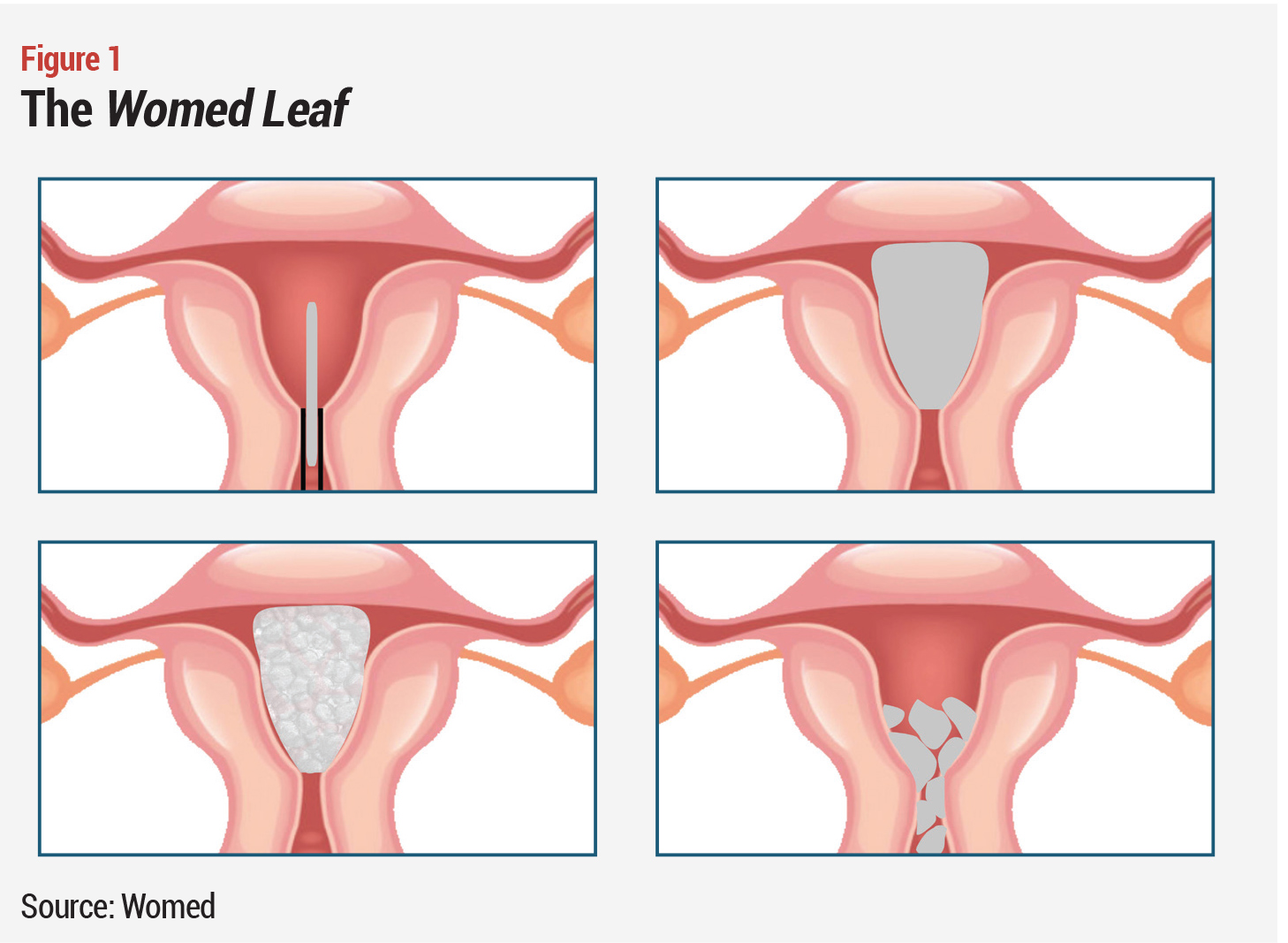ARTICLE SUMMARY:
French start-up Womed believes it has a novel solution to surgical adhesions caused by gynecological procedures and it is bringing it to market in China first.
After successfully steering Paris-based Stentys, developers of a novel line of stents to treat acute myocardial infarctions, from start-up to publicly-traded company, Gonzague “Gonz” Issenmann was in search of his next project. He spent a lot of time looking at various projects, and in 2018, at the University of Montpellier in France, he met Xavier Garric, PhD, who had spent several years researching a new approach to surgical adhesions. With initial research  completed, Garric was eager to turn the technology that had come from his research into a company and had even built a prototype. After about six-months of negotiation with the University and with around $500,000 (€419,000) in grant money from the French government and another €1.1 million from friends and family in a later follow-on raise, Womed was launched in 2018 by Issenmann, Garric, and Stephanie Huberlant, MD, PhD, an OB/GYN and fertility specialist at Nimes University Hospital in Nimes, France.
completed, Garric was eager to turn the technology that had come from his research into a company and had even built a prototype. After about six-months of negotiation with the University and with around $500,000 (€419,000) in grant money from the French government and another €1.1 million from friends and family in a later follow-on raise, Womed was launched in 2018 by Issenmann, Garric, and Stephanie Huberlant, MD, PhD, an OB/GYN and fertility specialist at Nimes University Hospital in Nimes, France.
Surgical adhesions have long been a vexing concern in surgeries and particularly so in gynecological surgery, Womed’s initial target market. “Adhesion is a big problem,” says Issenmann. “And when it happens in the uterus, there’s really no solution.” Uterine adhesions lead not just to pain, he notes, but also to infertility, as the two sides of the uterus bind together and essentially close the uterus for good.
In most open surgeries, preventing adhesions is, if not exactly easy, relatively straightforward. “It’s a mechanical solution,” says Issenmann. “All you have to do is to separate the tissue, and you can do so by building a barrier or a shield.” Other companies, such as Johnson & Johnson and Baxter International, have developed technologies, films or hyaluronic gels, to deal with adhesions, mostly in open surgeries.
But in non-open procedures, such as hysterectomies and D&Cs (dilatation and curettage), which take place inside the uterus, preventing adhesions is much harder. With D&Cs, for example, injured tissue binds with the surrounding tissue. Moreover, there are, as noted, ripple effects from adhesion problems in procedures such as D&Cs. Women who have early abortions or miscarriages, or who undergo a postpartum D&C, don’t find out until later that those earlier procedures will often prevent them from having a baby when they can or want to have one.
 Womed’s device, the CE-marked Womed Leaf, delivers a proprietary polymer film, trans-cervically like an IUD (intra-uterine device), that unfolds and expands, much like a sponge, when it comes into contact with fluid in the uterus, to prevent the adhesion. As the film grows, it fills the cavity, thus separating the two walls of the uterus, before ultimately going away (see Figure 1). The insertion, which uses a catheter, takes about 30 seconds; the film grows in about 30 minutes and then degrades over the course of a week or two, with fragments exiting via the cervix. Issenmann stresses that it is preventive in nature, rather than a repair. The device can be used immediately after a procedure to keep adhesions from forming then or to prevent them from occurring later on.
Womed’s device, the CE-marked Womed Leaf, delivers a proprietary polymer film, trans-cervically like an IUD (intra-uterine device), that unfolds and expands, much like a sponge, when it comes into contact with fluid in the uterus, to prevent the adhesion. As the film grows, it fills the cavity, thus separating the two walls of the uterus, before ultimately going away (see Figure 1). The insertion, which uses a catheter, takes about 30 seconds; the film grows in about 30 minutes and then degrades over the course of a week or two, with fragments exiting via the cervix. Issenmann stresses that it is preventive in nature, rather than a repair. The device can be used immediately after a procedure to keep adhesions from forming then or to prevent them from occurring later on.
Womed pegs the worldwide market for gynecological surgery adhesions at between $1.6-2 billion with peak sales of its device likely to be around $400 million since not every woman who experiences adhesion after surgery will want to correct the problem. And while the problem is universal, the biggest market is in China, which is where Womed will focus its early commercial efforts.
Issenmann notes that when he was doing due diligence on Womed’s technology, he discovered that around 60% of the clinical studies around intra-uterine adhesions had been done by Chinese researchers. After visiting China to get a better understanding of the market, he says, the reason was obvious. For 40 years, China has had a one-child policy which has dramatically increased the number of voluntary abortions. Today, Issenmann says, “those procedures are part of the normal routine, very different from what’s happening in the rest of the world and almost to the point where it’s become a form of contraception.” Womed estimates that the number of abortions in China each year is around 13 million and the total number of potential applications of its device at around 15 million.
Womed isn’t positioning its device as a tool to make abortions easier and more numerous; it’s simply trying to solve a problem that exists whether its device is on the market there or not. As noted,Womed’s initial target will be procedures to separate tissue where adhesions had formed from a previous procedure. That market represents only a few tens of thousands of cases in the US and Europe but probably close to 300,000 in China. Moreover, the case load is made up primarily of a highly-motivated patient population willing to pay out of pocket for the procedure. “That’s the biggest need and that’s where we’re going to start,” says Issenmann. Myomectomies to surgically remove fibroids in the uterus will be a second target procedure. And, finally, D&Cs, which are required after miscarriages, represent a third market, made up of millions of cases a year.
Issenmann also believes the company’s novel polymer technology allows for other applications beyond adhesions. “I’m convinced we have a technology with vast opportunities down the road just in gynecology, based on this polymer to deliver drugs and agents directly to the uterus,” he says, including a tool to promote hemostasis. “Also, with the ability to use its catheter to deliver hormones to the uterus, Womed is carefully planning to step into the multibillion-dollar Assisted Reproductive Technology market, addressing the issue of infertility, in the next few years, as noted an opportunity that arises with its initial targeting of China.
Indeed, even as Womed is focused on its initial anti-adhesion application and a China launch, there are, Issenmann says, “lots of things to work on. Over the next few years, there’s a lot more coming.”
Excerpted from “Womed's China-First Strategy in Women's Health,” MedTech Strategist, September 8, 2020.
![]() Trial MyStrategist.com and unlock 7-days of exclusive subscriber-only access to the medical device industry's most trusted strategic publications: MedTech Strategist & Market Pathways. For more information on our demographics and current readership click here.
Trial MyStrategist.com and unlock 7-days of exclusive subscriber-only access to the medical device industry's most trusted strategic publications: MedTech Strategist & Market Pathways. For more information on our demographics and current readership click here.
